Curator Q&A: British Library’s Terror and Wonder: The Gothic Imagination exhibition
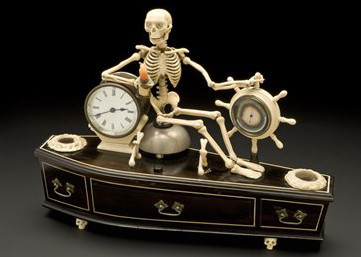
As the British Library’s Terror and Wonder: The Gothic Imagination exhibition captivates and chills its audience, we caught up with curator Greg Buzwell to find out just what went into producing this major show, which opened in early October to mark the 250th anniversary since the publication of the first Gothic novel (The Castle of Otranto by Horace Walpole) and to find out which of the spine-chilling items scare him silly…
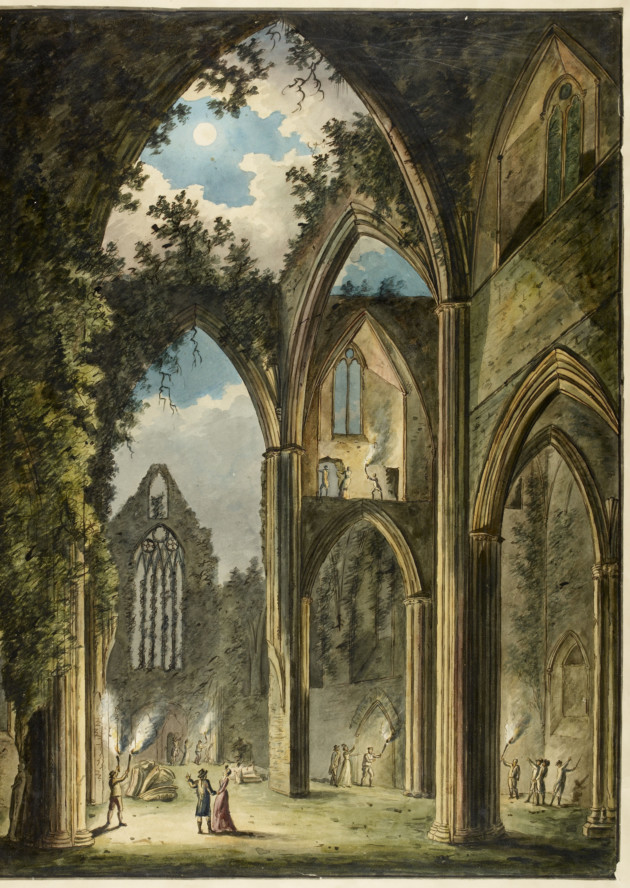
Tintern Abbey. Watercolour, 1812. © British Library Board
Can you describe the research process – how did you tackle such a huge topic?
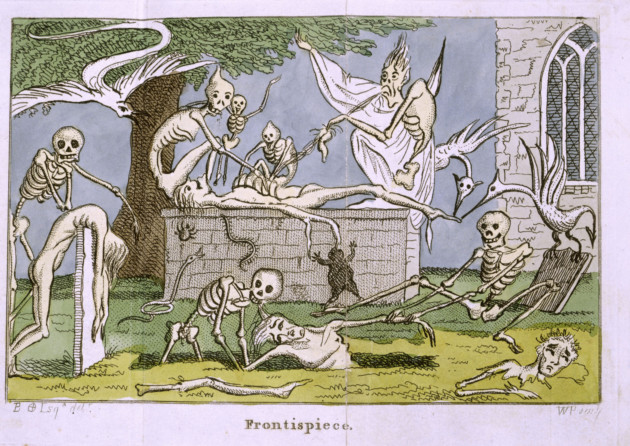
Tales of Terror, Matthew Lewis, published 1808 (c) Photography (c) British Library Board
Broadly speaking the research process itself was fairly straightforward. The exhibition celebrates the 250th anniversary of the publication of Horace Walpole’s The Castle of Otranto, the first Gothic novel. The book first appeared on Christmas Eve 1764 and the exhibition explores the novel itself, the influences that inspired Walpole and examines the background to his book. From there we explored all aspects of Gothic up to the present day. Literature provides the theme running throughout the show – so we looked at authors such as Ann Radcliffe, Matthew Lewis, Jane Austen (for Northanger Abbey), Mary Shelley, Charles Dickens, Bram Stoker, Daphne du Maurier, Clive Barker and so on but we also looked at the importance of the Gothic imagination for art, film, architecture, fashion and lifestyle. We had an academic advisor, Dr Dale Townsend from Stirling University who guided us through the subject and was always on hand to answer our questions and point us towards new research etc. We also managed to secure numerous loans from around twenty other institutions, all of which considerably enhanced the exhibition.
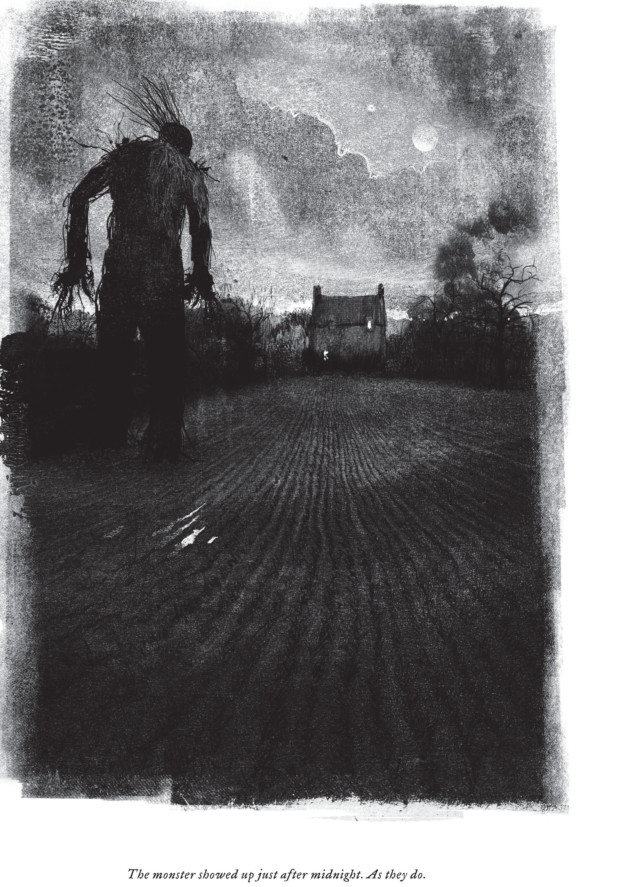
Jim Kay, preliminary sketches for A Monster Calls. Kindly lent by Jim Kay.
Was there an overwhelming range of artefacts available and easily accessible? Did you have to be very selective? Any surprises or rare finds?
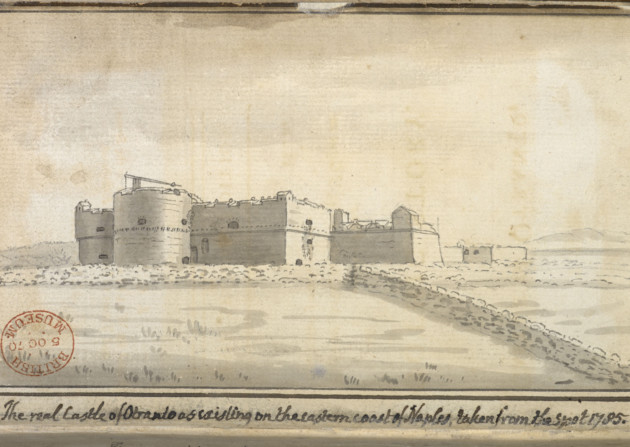
Watercolour of the Castle of Otranto in Horace Walpole’s personal copy of The Castle of Otranto. Photography courtesy of the British Library.
From our own collections we had a vast array of manuscripts and rare editions to highlight the themes in the show. To add variety we also borrowed heavily from other institutions. The exhibition features dozens of film clips, ranging from Bride of Frankenstein (1935), Nosferatu (1922), The Innocents (1961) and The Curse of the Were-Rabbit (2005). We also borrowed paintings, fashion items (including an Alexander McQueen dress), film posters, a vampire slaying kit, architectural models and a model of the were-rabbit itself. Terror and Wonder is certainly one of the most visually appealing and diverse exhibitions we have ever held here at the British Library.
We did have to be quite selective. There is such a wealth of Gothic material out there and we were coving 250 years of the Gothic imagination in the show so there was a huge amount of material to choose from. Deciding what to leave out was one of the hardest things of all. A large section on Dracula, for example, which we did eventually decide to create, meant that other surrounding areas had to be smaller so it was a difficult balancing act to get the content of the show just right.
The biggest ‘surprise find’ concerned the author Ann Radcliffe, who wrote perhaps the quintessential Gothic novel, The Mysteries of Udolpho (1794). When we were researching the show it appeared that there were only two examples of Radcliffe’s handwriting known to exist, and both of those were in America. We actually found a third example – a letter from Ann Radcliffe to her mother-in-law in the British Library itself. It was in a compilation volume of letters from notable women authors but catalogued in such a way as to have avoided detection until we carried out our research for the show.
Were there many sinister items that you had to leave out for fear of scaring younger visitors too much?
We didn’t deliberately leave out any items on the grounds that they may have been too scary for children. I think that, in the right circumstances, fear can be quite an enjoyable sensation. You only have to look at the continuing popularity of a show such as Doctor Who – and the popular cliché of children watching the show from behind the sofa – to realise that a dash of fear can be a thrilling and enjoyable sensation. Also what some people might find scary – film versions of Mary Shelley’s novel Frankenstein for example – others find almost quaint and perhaps even endearing. One person’s ‘scary monster’ is another’s ‘quaint curiosity’. It’s always difficult to second guess what people will actually find frightening.
What, in your opinion, best represents the genre in the exhibition, whether a single item, or whole category: literature, art, film?
The thread that runs throughout the show is Gothic literature. Everything we look at in the exhibition has Gothic literature lurking behind it so that’s the key subject for us. Within that perhaps the section which best encapsulates the show (and this is my own personal opinion) is the section on Bram Stoker’s novel Dracula (1897). We have Stoker’s own manuscript for his theatre adaptation of the novel on display, along with the first edition of the novel and the first illustration of the Count to appear in print. We also have various costume designs from film adaptations; set designs for one of the Hammer Film adaptations of the novel; two clips from the iconic 1922 film based on the book, Nosferatu, and a vampire slaying kit containing Victorian artefacts (a crucifix, a Prayer Book, a mallet, some stakes, holy water, a pistol etc.,) which no vampire hunter should be without. It’s a lovely grouping of objects – highlighting the academic, personal, cinematic and folklore elements lurking within the shadow of the original novel.
Do you think modern contributors to the genre can outshine the original pioneers, such as Walpole, Blake and Shelley?
Gothic has always attracted writers of the very highest calibre. Ann Radcliffe, Mary Shelley, Jane Austen, Charles Dickens, Charlotte Brontë, Robert Louis Stevenson, Oscar Wilde, Henry James, Daphne du Maurier and Angela Carter all produced work in which the Gothic features very heavily. Perhaps the two most iconic Gothic novels in the eyes of the general public are Mary Shelley’s Frankenstein (1818) and Bram Stoker’s Dracula (1897) and it’s difficult to see their iconic status ever being matched but, even so, there are many brilliant works of imaginative Gothic fiction published every year. Gothic has always adapted itself to the age in which it was written, mirroring the concerns of society at the time. That is still very true and new Gothic horrors lurk around every corner. Gothic is a genre that continually fascinates and surprises. It is always developing, altering, adapting and pushing at established boundaries.
What has been the early public reaction to the exhibition?
The early public reaction has been enormously positive. So many of the authors and books featured in the show appear on GCSE, A-Level and undergraduate courses so it has a considerable appeal for anyone studying literature. The film clips, paintings, models, photographs and movie posters meanwhile all add massive visual appeal for a general audience with a love of the dark side of the human imagination. Hopefully the show contains something for everybody. After all, who could fail to be excited and fascinated by a vampire slaying kit? Or fail to be alarmed (and charmed) by a menacing were-rabbit? There is a strong intellectual thread running through the show, tying everything together, but it is also great fun and that mixture of the intellectual, the emotional and the thoroughly enjoyable is exactly how Gothic literature itself should be enjoyed.
For more details about Terror & Wonder see www.bl.uk/whatson/exhibitions/gothic



